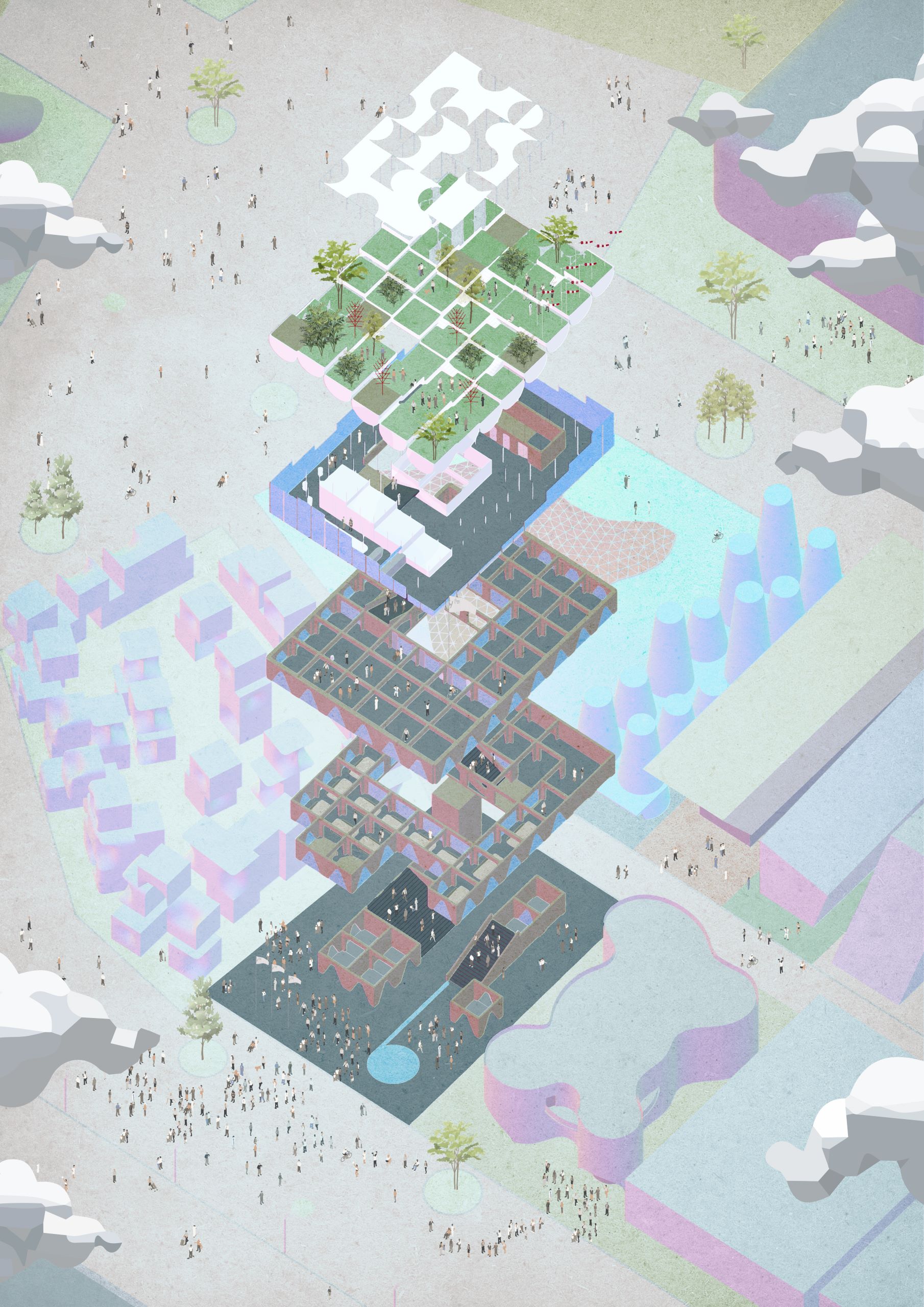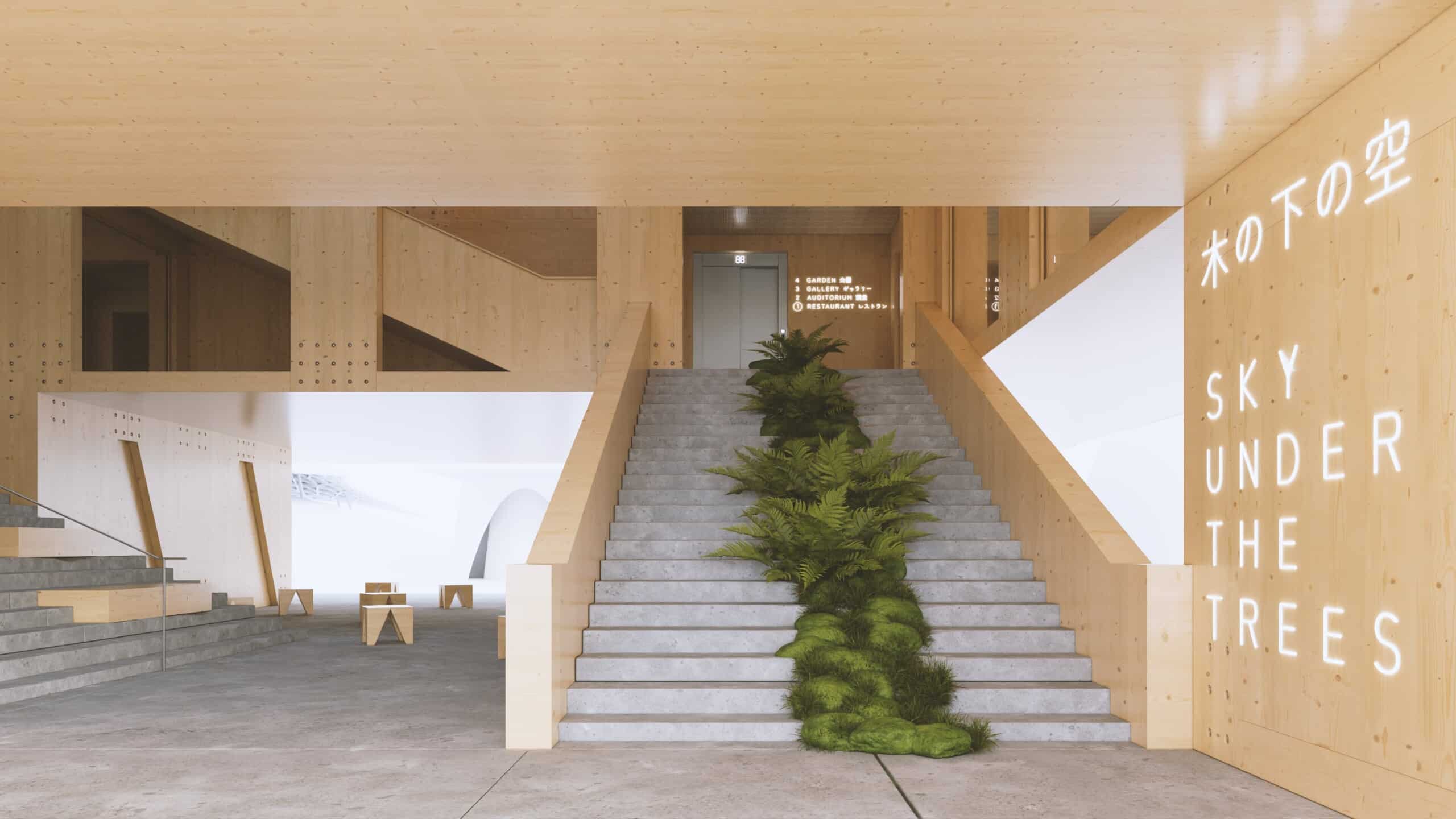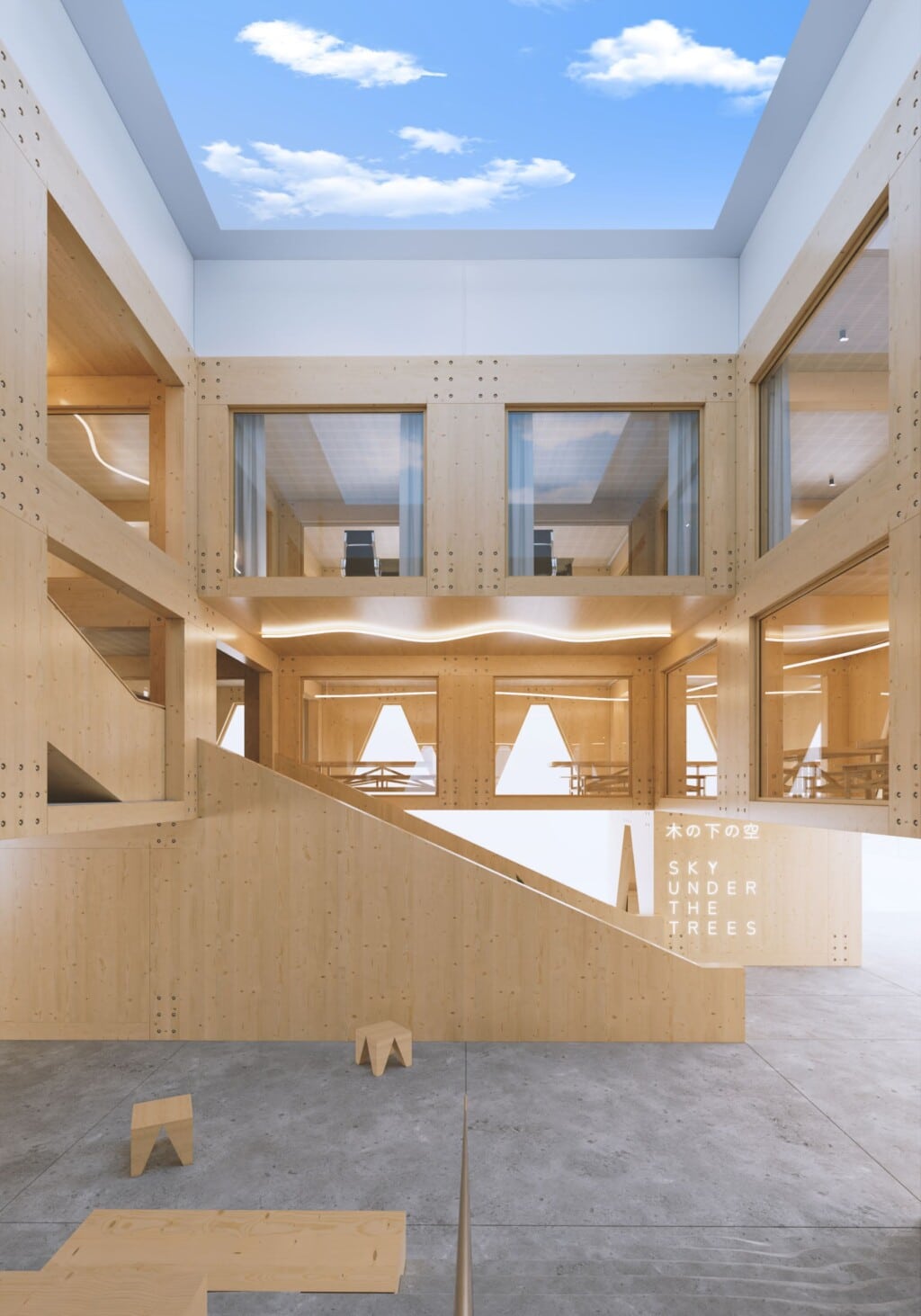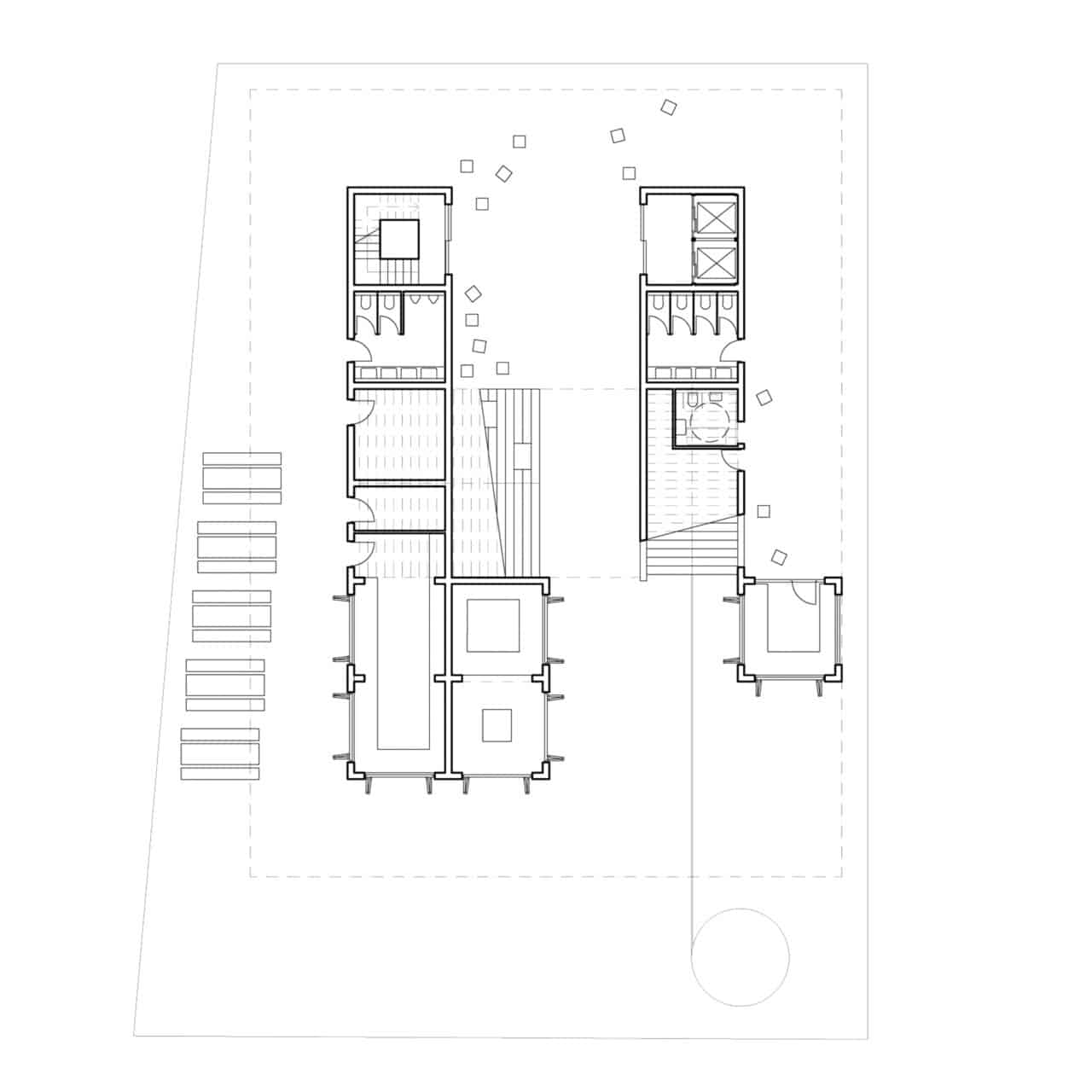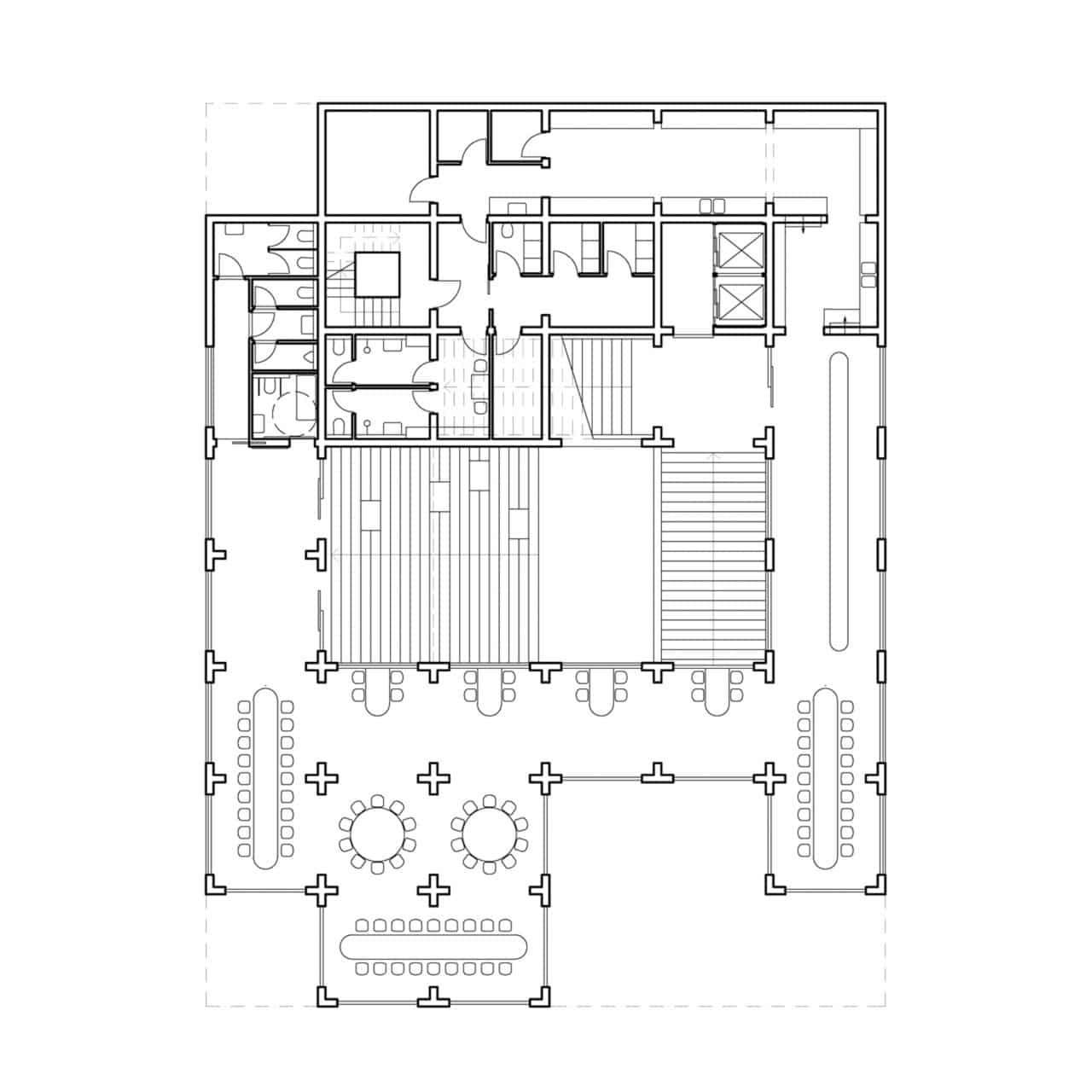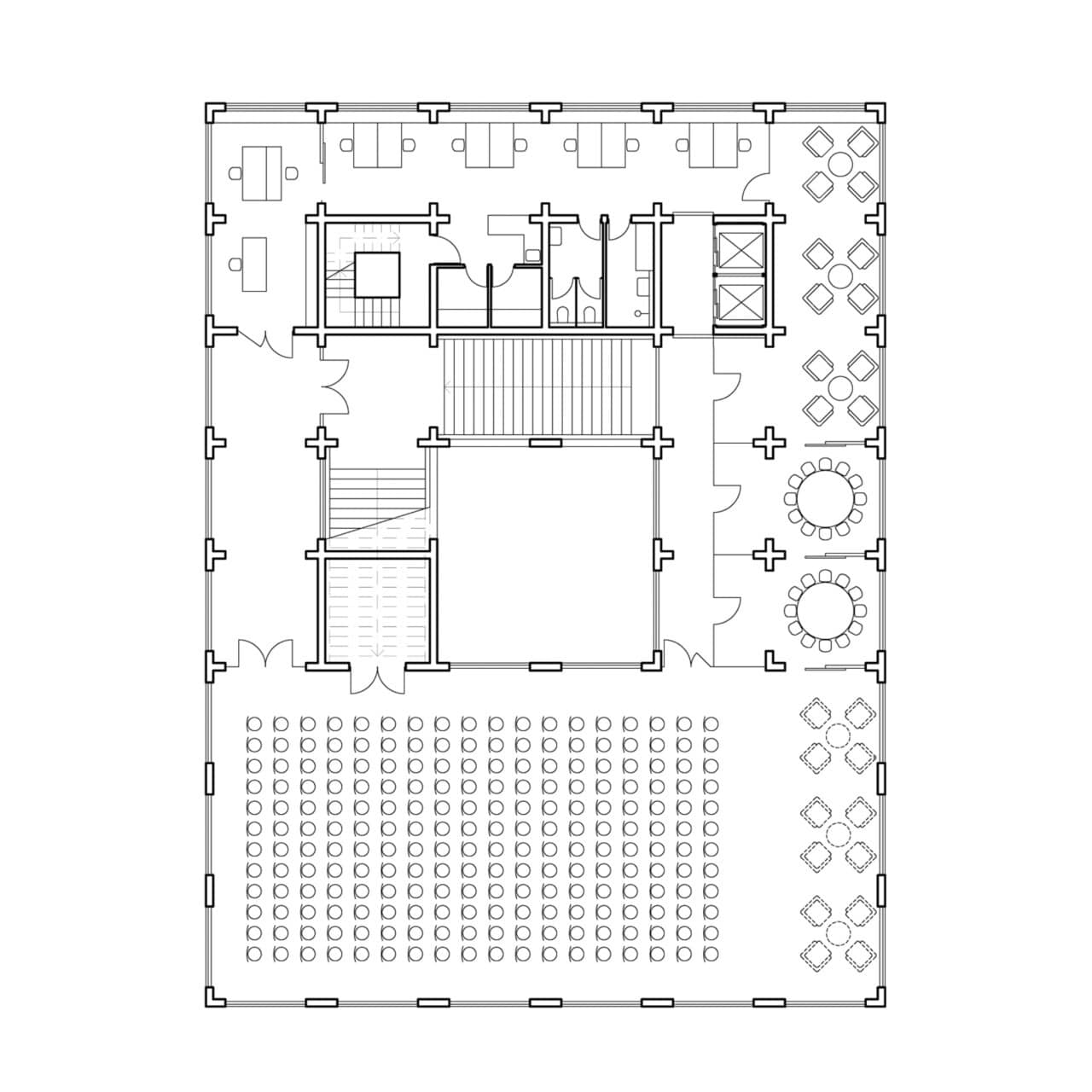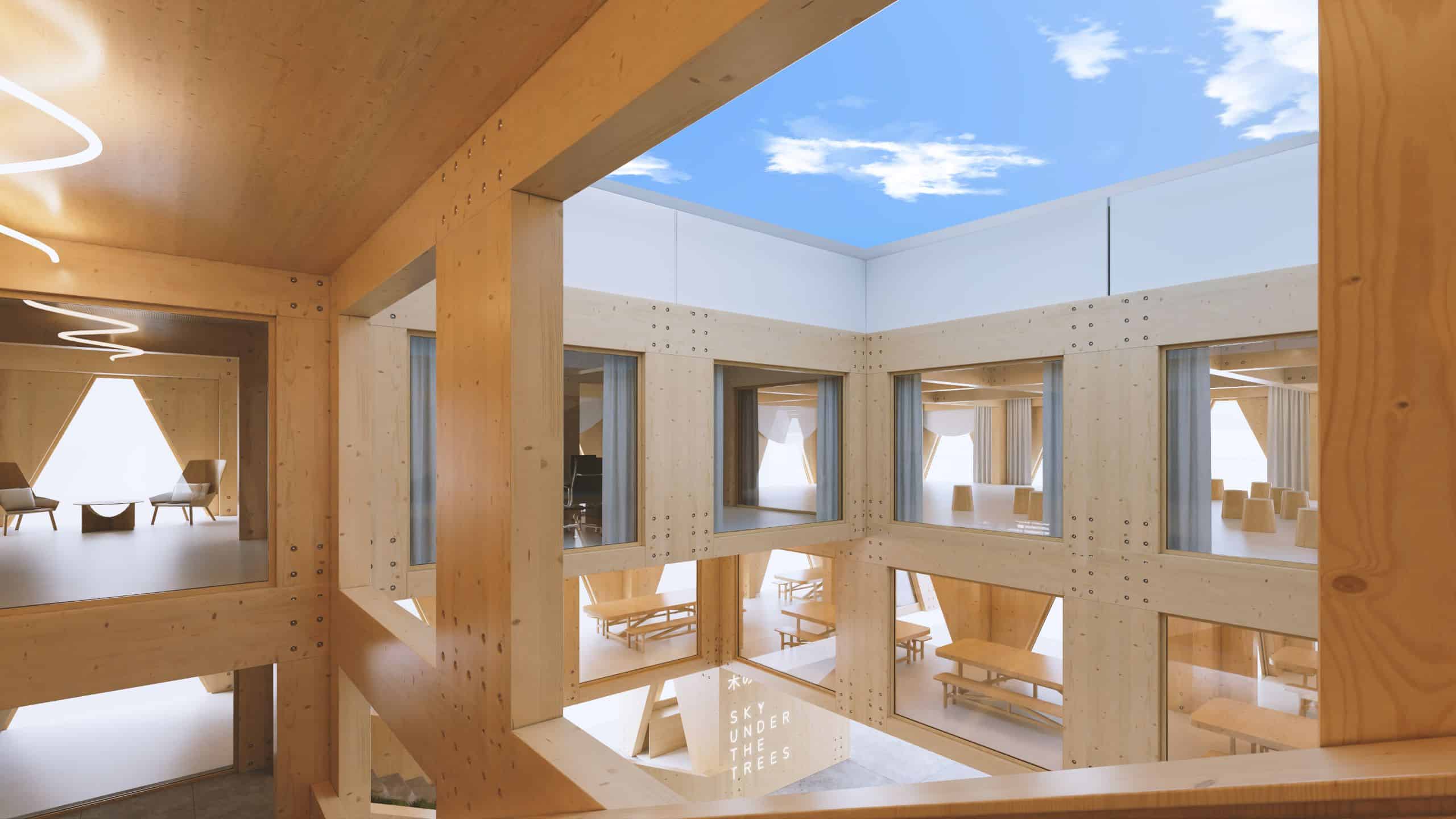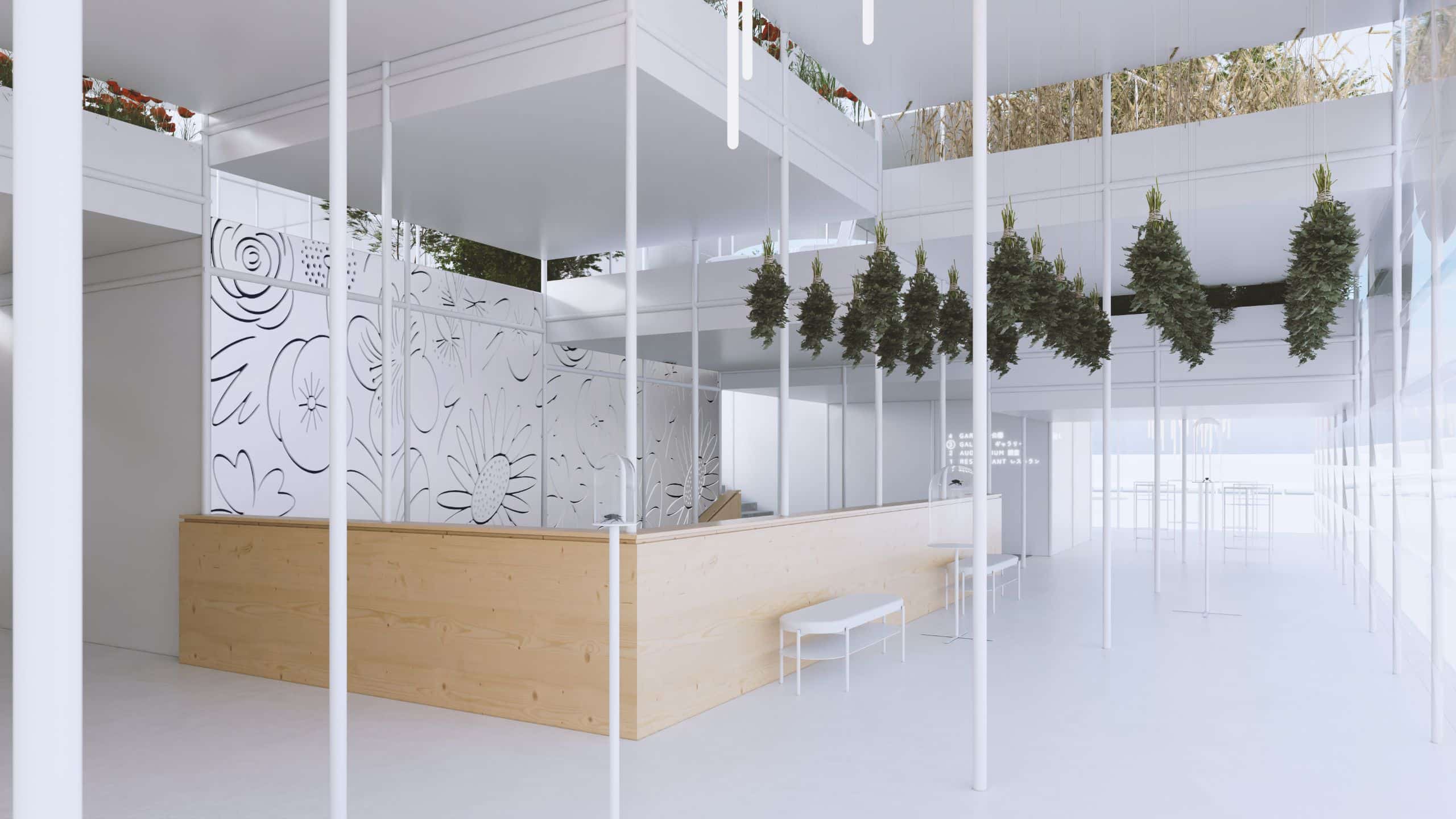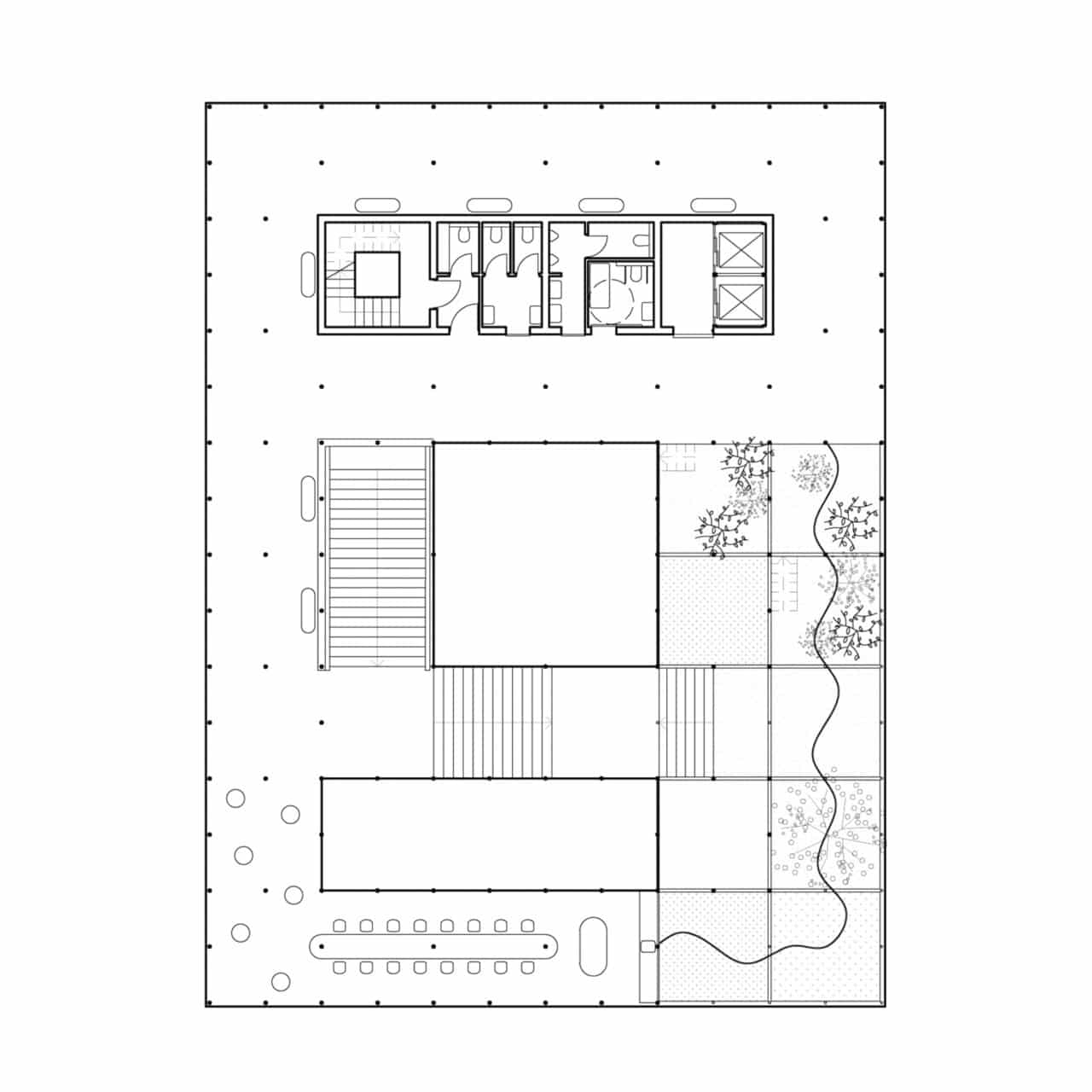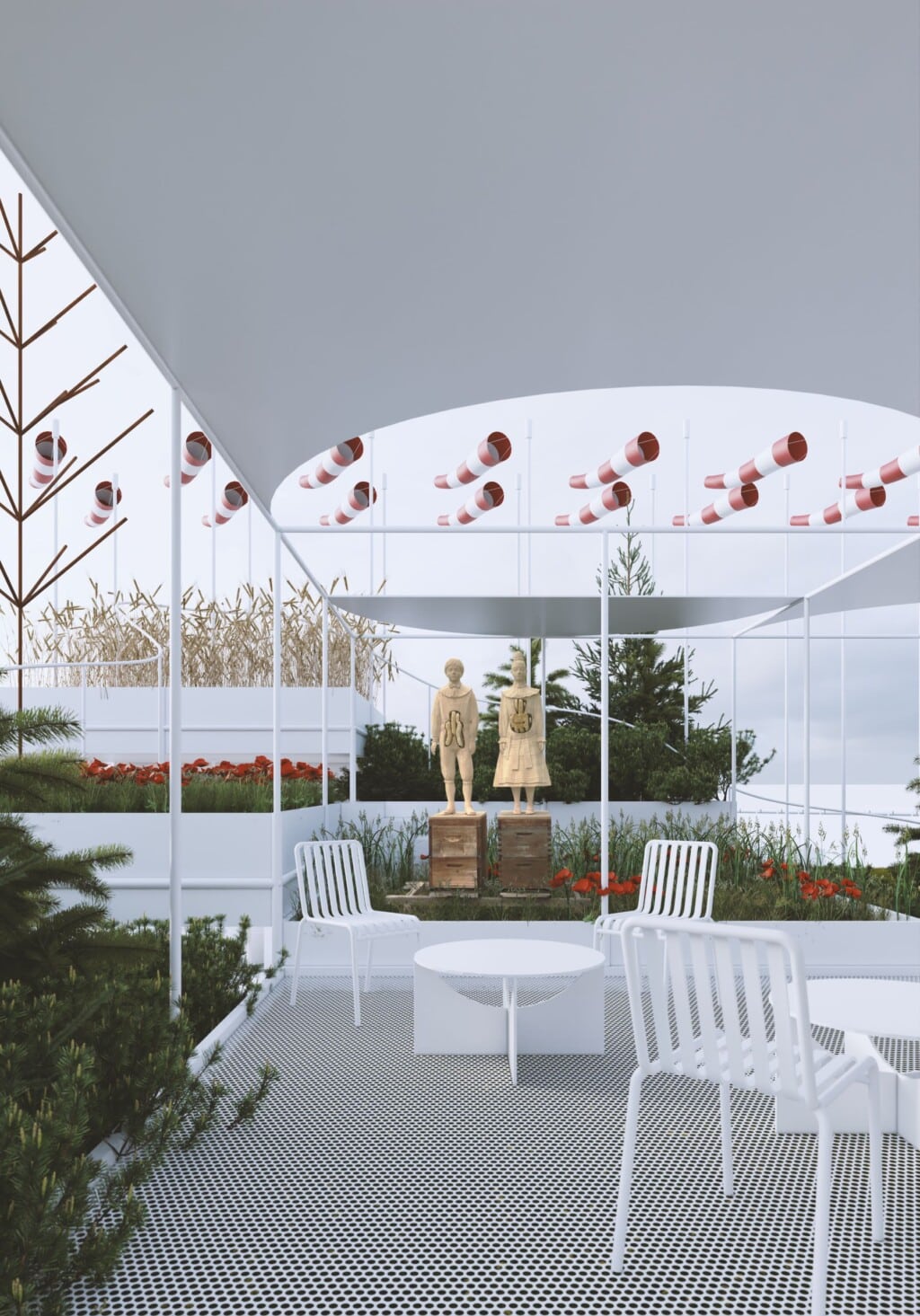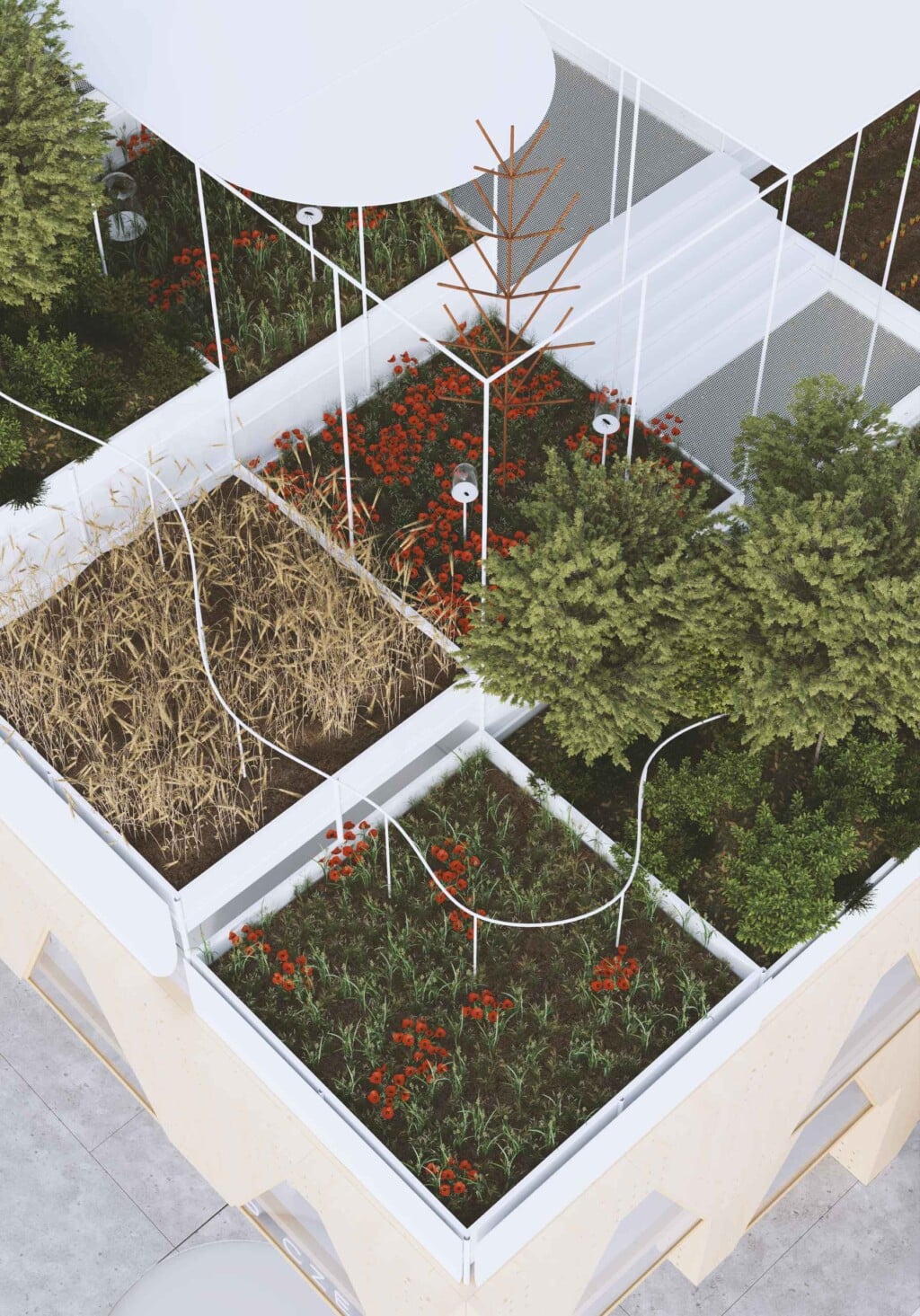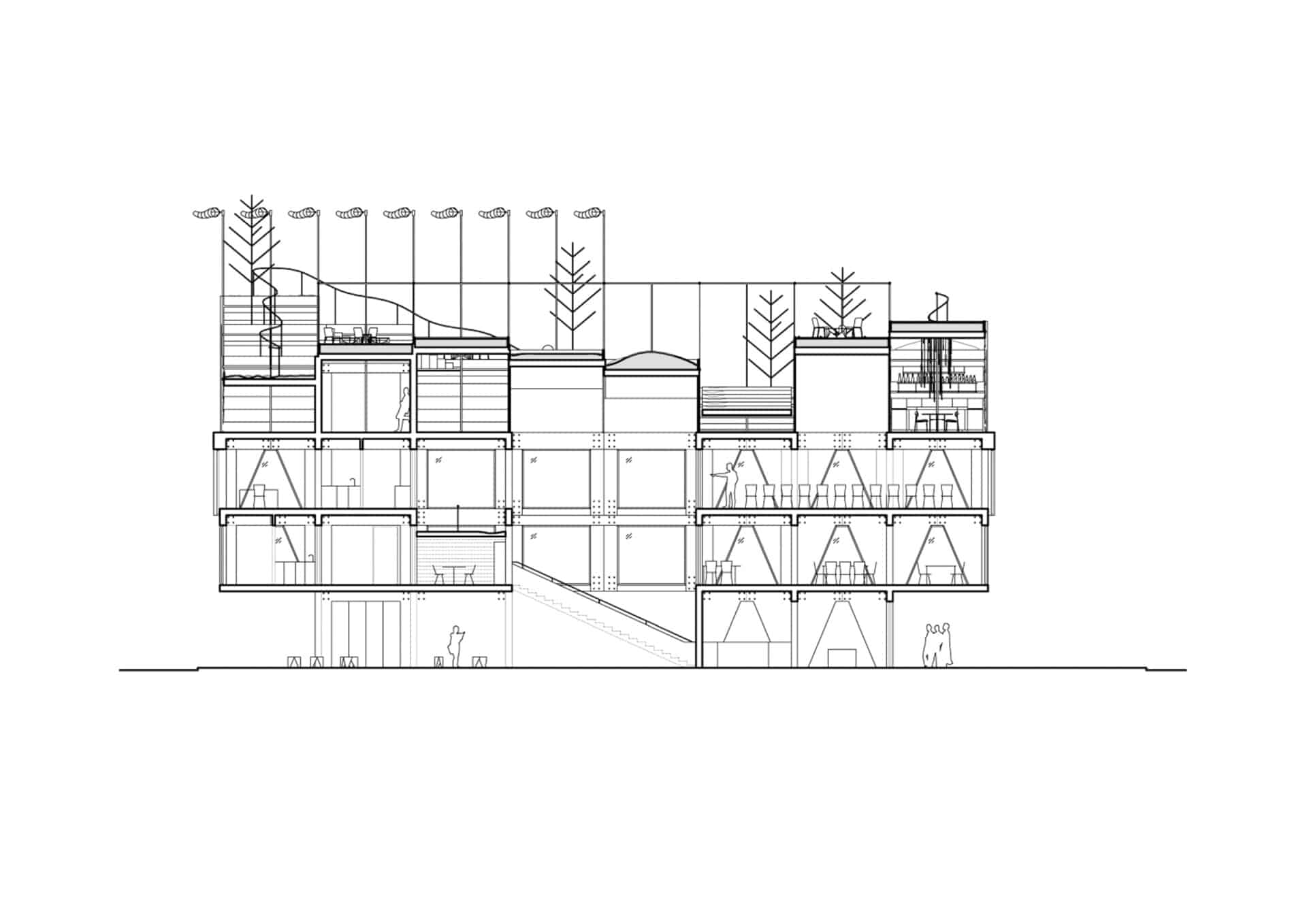The landscape design of the pavilion is a reminiscence of the mosaic structure of the Czech landscape. The roof landscape of the pavilion is varied, with different heights showing the diversity of surfaces, the structure of stems, trunks and branches, the texture of leaves and the changing colours during the seasons. On the roof, a small brook springs up and weaves its way through the pavilion, ending in a pool in the parterre. The surface mirrors the clouds, the visitors and the entire exhibition, reinforcing the idea of tying people’s lives to the weather, the cycle of the year and life.
